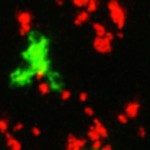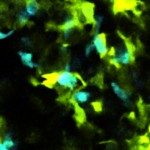Link to Pubmed [PMID] – 22683126
Immunity 2012 Aug;37(2):351-63
Upon antigen recognition, T cells form either static (synapses) or migratory (kinapses) contacts with antigen-presenting cells. Addressing whether synapses and kinapses result in distinct T cell receptor (TCR) signals has been hampered by the inability to simultaneously assess T cell phenotype and behavior. Here, we introduced dynamic in situ cytometry (DISC), a combination of intravital multiphoton imaging and flow cytometry-like phenotypic analysis. Taking advantage of CD62L shedding as a marker of early TCR signaling, we examined how T cells sense TCR ligands of varying affinities in vivo. We uncovered three modes of antigen recognition: synapses with the strongest TCR signals, kinapses with robust signaling, and kinapses with weak signaling. As illustrated here, the DISC approach should provide unique opportunities to link immune cell behavior to phenotype and function in vivo.



